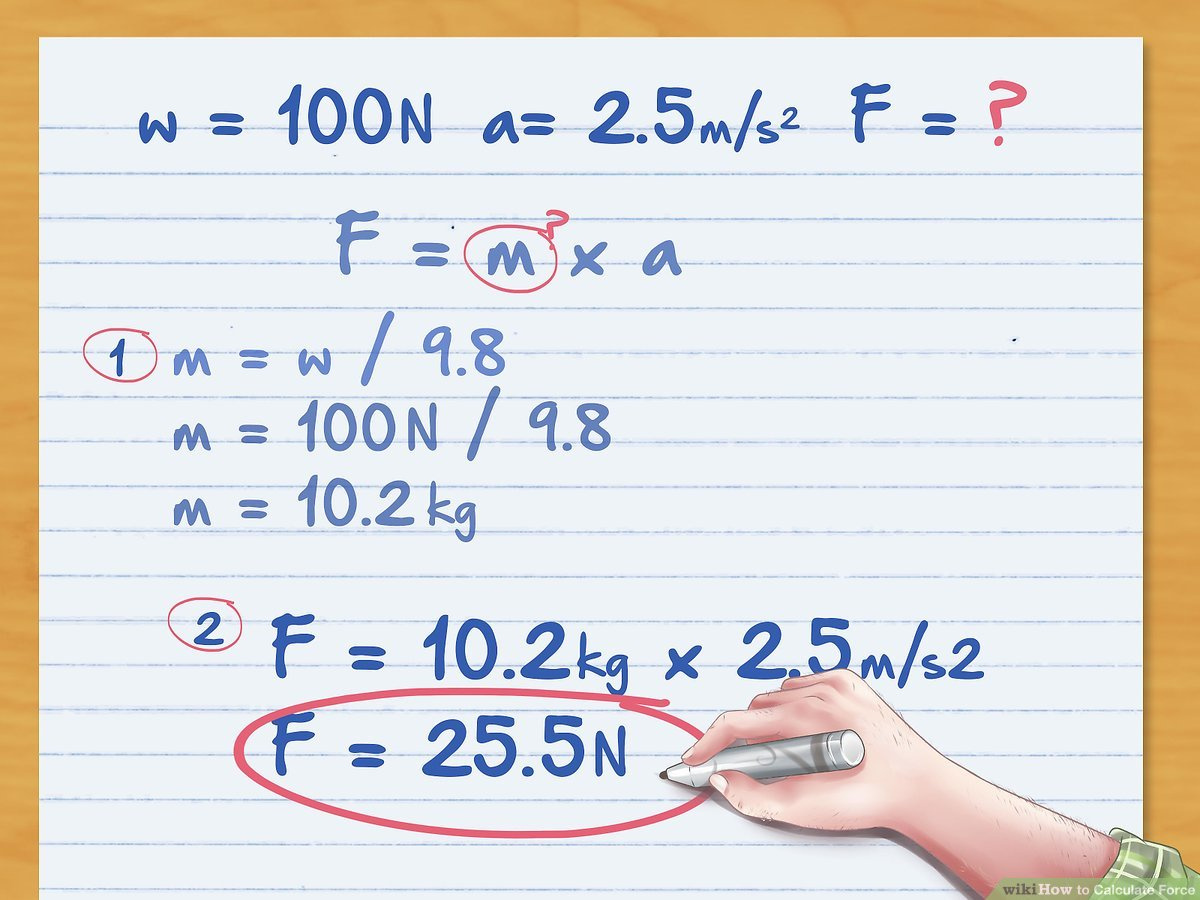When we think about force, we usually associate it with the idea of something moving or accelerating. However, there are various scenarios where force is applied without causing acceleration, such as when a table holds up a vase. Understanding these static forces is just as important as those that set objects in motion. Calculating force without acceleration might seem a bit counterintuitive, but there are some methods to do so that rely on other physical principles. Let’s explore these methods together and see how we can understand the forces at play in everyday objects that are not accelerating.

Newton’s First Law
Newton’s First Law of Motion can often be used to calculate force in static situations. This law states that an object will remain at rest unless acted upon by an unequal force.
Detailed Introduction
Newton’s First Law, also known as the Law of Inertia, provides us with insight into stationary objects. An object at rest is considered to be in a state of equilibrium, meaning the sum of all forces acting upon it is zero. This law helps us calculate the forces even when there is no acceleration involved.
Detailed Steps
- Identify all the forces acting on the object. These might include gravity, normal force, tension, or friction.
- Draw a free-body diagram, illustrating all these forces with arrows.
- Write down equations setting the sum of all vertical forces to zero and the sum of all horizontal forces to zero.
- Solve these equations to find the magnitude of any unknown forces.
Summary
This method is beneficial because it utilizes fundamental physics principles without requiring advanced mathematics. However, it requires a good understanding of different types of forces and might not account for complex situations with non-linear forces.
Static Equilibrium
Static equilibrium relates to objects that are at rest and the forces acting upon them are balanced.
Detailed Introduction
In static equilibrium, an object isn’t just free from acceleration; it’s completely unmoving. This occurs when all the forces acting upon an object are canceled out by opposing forces, making it possible to calculate the magnitude of forces without acceleration.
Detailed Steps
- Identify all forces acting on the stationary object, just as with Newton’s First Law.
- Ensure that the sum of all forces in any direction balances to zero.
- Apply the same balance principle to moments (torque) around any pivot point on the object.
- Solve the resulting system of equations to find individual forces.
Summary
Static equilibrium is powerful for calculating forces in complex structures or systems. It’s ideal for engineered systems analysis but can be too complex for non-technical individuals without guidance.
Weight and Mass Relationship
One can calculate force based on the inherent properties of matter, such as mass and gravitational pull.
Detailed Introduction
Every object with mass exerts a gravitational force, which is equal to its weight. By leveraging this relationship, it’s possible to calculate the force an object applies simply by knowing its mass and the acceleration due to gravity.
Detailed Steps
- Measure the mass of the object using a scale.
- Multiply the mass by the standard acceleration due to gravity (which is approximately 9.8 m/s^2 on Earth).
- The resulting product is the gravitational force or weight of the object.
Summary
This calculation is straightforward and universally applicable since the gravitational constant is well-known. However, it does require accurate measurement of mass and doesn’t account for other forces that might be acting on the object.
Pressure and Area Relationship
Pressure is defined as force per unit area. If the pressure on an object and the area of contact are known, the force can be calculated.
Detailed Introduction
In many practical situations, like in the case of a standing object, you might know the pressure exerted and the area it’s applied upon. This information lets you reverse-engineer the problem to find the force without needing acceleration.
Detailed Steps
- Measure or acquire the pressure value being exerted (often given in Pascals).
- Measure or determine the area over which the pressure is being applied.
- Multiply the pressure by the area to calculate the force.
Summary
This method is quite intuitive and useful, particularly for hydraulic systems and gases. The downside is that accurate pressure and area measurements are pivotal for the correct calculation of force.
Tension in Cables and Ropes
When ropes or cables support an object, the tension in the material can be proportional to the force acting on the object.
Detailed Introduction
Cables and ropes are often used to suspend objects, and the force due to the object’s weight is transmitted through tension. We can calculate this force if we know the properties of the cable or rope and the weight of the suspended object.
Detailed Steps
- Ascertain the weight of the object which the cable or rope is supporting.
- If the object is stationary, you can assume that the tension in the cable or rope is equal to the weight of the object.
- If there are multiple cables or ropes, you must consider the angle at which they are positioned and distribute the weight accordingly between them.
Summary
Calculating tension is a direct process, but it can become complicated if multiple ropes or angles are involved. Moreover, this does not factor in the inherent strength of the rope or cable, which is crucial in practical applications.
Hydrostatics
In fluids, the hydrostatic force on submerged surfaces can be calculated without the need for acceleration.
Detailed Introduction
Objects submerged in a fluid experience a force due to the pressure exerted by the fluid. This can be calculated using the principles of hydrostatics, the study of fluids at rest.
Detailed Steps
- Determine the depth of the object below the fluid’s surface.
- Calculate the fluid pressure at this depth.
- Use the surface area of the object in contact with the fluid to calculate the force, much like the pressure-area relationship method.
Summary
The hydrostatic method is insightful for understanding forces in fluid environments. The calculations can be complex due to the need to calculate pressures at various depths, especially when dealing with non-uniform objects.
Buoyant Force
Objects immersed in a fluid are subject to a buoyant force opposed to the gravitational force.
Detailed Introduction
Buoyancy is the force that allows objects to float. The force is equal to the weight of the volume of fluid displaced by the object. This principle can be used to calculate force without involving acceleration.
Detailed Steps
- Calculate the volume of the object submerged in the fluid.
- Determine the density of the fluid.
- Multiply the fluid’s density by the volume of the submerged part of the object and by the acceleration due to gravity to find the buoyant force.
Summary
Calculating the buoyant force is crucial in designing vessels and understanding how objects will interact in a fluid. It requires knowing the exact volume of the submerged object and the fluid’s density, which may not always be readily available.
Frictional Force
The frictional force, a force that resists motion between two touching surfaces, can be calculated without the need for acceleration.
Detailed Introduction
Friction is present whenever two surfaces slide against each other. While we often associate friction with objects in motion, there is also static friction, which can be calculated and is the force that must be overcome to start an object moving.
Detailed Steps
- Determine the normal force acting between the object and the surface, often the weight of the object.
- Identify the coefficient of static friction for the surfaces in contact.
- Multiply the normal force by the coefficient to find the frictional force.
Summary
Knowing the frictional force can enlighten us on how much effort is required to initiate movement. Accurate coefficients of friction may be difficult to find and can vary widely depending on conditions.
Centripetal Force for Circular Motion
Though involving motion, centripetal force can be calculated knowing only the velocity and radius of the circular path, not acceleration.
Detailed Introduction
When objects move in a circle, they experience a centripetal force that keeps them on their circular path. This force can be calculated without direct acceleration values.
Detailed Steps
- Determine the velocity of the object in circular motion.
- Measure the radius of the circular path.
- Use the formula for centripetal force, which is the mass times the square of the velocity, divided by the radius.
Summary
This method provides insight into the forces acting on rotating systems without acceleration. It requires precise measurements of velocity and radius, and must be used only in circular motion contexts.
Lever’s Principle
The principle of levers can be used to calculate forces in systems with pivots and fulcrums, without considering acceleration.
Detailed Introduction
A lever amplifies an input force to provide a greater output force. Balance on a lever occurs when the product of the input force and its distance from the fulcrum equals the product of the output force and its distance from the fulcrum.
Detailed Steps
- Measure distances from the fulcrum to the points of force application.
- Assess the force that is known, whether input or output.
- Apply the principle of moments to find the unknown force.
Summary
Lever principle is a classic example of simple machines and can be used effectively to calculate unknown forces. It doesn’t, however, account for friction’s effect on the fulcrum or deformation of the lever itself.
Conclusion
Calculating the force without acceleration is not just a theoretical exercise; it has real-world applications in engineering, physics, and everyday problem-solving. These methods span a range of scenarios that demonstrate the importance of understanding forces in a static environment. From the weight of an object to the tension in a cable, or even the force due to hydrostatic pressure, each scenario offers unique insights into how objects interact without the need for movement. While these calculations may seem complex at first glance, knowing the right principles and formulas can simplify the process.
FAQs
-
Can force be zero if an object is at rest?
Yes, an object at rest may have a net force of zero if all the acting forces cancel each other out. However, individual forces can still be acting on the object, which can be calculated as described in the solutions above. -
How do you calculate force if no distance is traveled?
Force can be calculated without distance by understanding the relationships between force and other factors such as mass, pressure, tension, or buoyancy, even if the object doesn’t move. -
Is acceleration always required to calculate force?
No, acceleration isn’t always required to calculate force. As demonstrated in the solutions presented, there are many situations where forces can be calculated using conditions of equilibrium, material properties, and geometric relationships.









